In one of the standard books on drinking sake in Tokyo, there’s an establishment called ‘Sake no Ana’. I like to translate that as ‘The Liquor Hole’, although I’m sure there’s a more delicate way of putting it. If I had to assign a name to Kawashima, it would be ‘The Liquor Cave’. It’s a really cool place, albeit in a somewhat creepy way. And it furthers my progress towards becoming the foremost site on the internet for quality sake destinations in Tokyo (I know, three in three days!). I left this picture dark on purpose, so you can a good sense of how unobtrusive this place is. It’s just a room in the ground floor of a little apartment building. They store some of the sake outside by the door.
For starters, the walls are covered with crap. And I do mean covered, every inch, and by crap I do mean ‘labels that someone meticulously peeled off sake bottles and pasted to the walls’. The Woodsman suggested that this was just like a bistro doing the same thing with wine labels; I don’t think so. Bistros tend to restrict themselves to one wall, or a big frame filled with labels. The effect was more like a restaurant with the ceiling covered with trucker hats, or perhaps the Kangaroo Bar in Phuket, where it’s small-denomination notes of all countries (I want to link to this because I liked John the owner and it’s a fun bar, but the links I’m finding are for a different type of Kangaroo Bar in Patong). The staff is Mom and Dad cooking behind the counter, and an aging, balding, long-haired sake enthusiast who runs the drinking side of things (relationship unclear).
They have one of the oddest concepts I’ve ever heard of in a bar. First, they strongly encourage you to get courses of drinks. This is either 3 or 6 sakes, chosen by the master. He frowns on deviations from this, but I think you could get an extra one or request your favorite. Second, you get to choose your glasses – 3 of them – from a big selection on towels on top of the counter. You’ll use them, in sequence, for your course. Then they’ll be washed and used again if you’re having the course of 6. And they come in lots of different sizes. And the pour is dependent on the glass, but the price isn’t. That means the wineglass-shaped cut glass item that I chose got filled up to the rim with, I bet, close to 300ml of sake, as did the 60ml glazed pottery item. Look at it. It’s full! I was so stunned that I had to take a picture. We speculated about whether the master would steer you away from absolute destruction if you chose 6 varieties and 3 big glasses, but I sorta think not. Let’s labor the point no longer. I prefer instead to forget the sheer volume of sake we drank. Good lord.
I’m not even gonna pretend I remember all of these. You can actually ask him to pour different things for each person, which means you could get through 12 varieties. This seems greedy, as well as not being constructive to talking about what you’re drinking. Clearly this was a nigori fellow; you can also see that it was the end of the bottle, and tasted a touch oxidized, which didn’t amuse me as a way to start. Just to get a little practice in on my reading and searching, I’m going to tell you that this is Rokkasen, 六歌仙, and it’s from Yamagata.
We started the food proceedings with a little chawan that was a gift from Mama. Arigatou Mama! Looking back, I’m a little startled at the volume of food we got through.
This is the toshi – some tofu skin with boiled veg, some spinach with sesame, and some sliced duck. Pretty good, and firmly established the food pattern – homey, simple, tasty. Nothing wrong with that.
This is Jikon, from Mie. I couldn’t look up this kanji to save my life. Ponkan helped. Jikon is serious stuff – made from Yamada Nishiki rice, ground off 60%. That reminds me, the sake master gave really excellent explanations of the provenance and terroir of each beverage. I wish we could have caught more than half.
Food service is slow. This sashimi plate looks awesome, but the fish was low quality, as it has to be to deliver this volume (fresh though, no problems). Our food bill was about Y4k per person; I think I’ve spent Y8k on just a sashimi plate at least once in my life. The menu is also confusing and disorganized; I couldn’t really identify the sashimi section, and eventually just said “How about some sashi?”, which got more or less a grunt, and then this platter after 30 minutes or so. Choices? We don’t need no stinkin’ choices.
Insert another variety of sake here.
Around the same time as the fish, we also got this ‘pickled cheese platter’. A little weird, right? Well, in the front you have cheddar cheese that’s been buried in dead sake yeast (lees, kasu, whatever) for one week (left) and 2 weeks (right), then in the back a 3-week old cream cheese. All of these were actually too mild for me. Back right, sake mixed with cream cheese, raisins and walnuts. Weird acidity, but nice. All this reminds me that I:ve got some kasu in the fridge; what I was going to do with it, I’m not sure. Wonder how long it lasts.
There was a problem with the picture uploads. I know you’re devastated. Insert yet another variety of sake here. For example, the Bakuren from Kudokijouzu (ばくれん、くどき上手), which I know we drank – you too wouldn’t forget the picture of an Edo woman getting her sake on that adorns the label. Actually I think I don’t yet understand all the mysteries of sake naming – Bakuren seems to be part of the Kudokijouzu label, produced by the Kamenoi brewery. I give up. Pour another one.
Insert grilled fish here. Oh wait, he’s inserted. If I remember correctly, this was a dried aji. They recommended that from among the grilled fish selections, and the small size turned out to be a blessing amongst all the other things.
Somewhere along the line, I’ve conceived a real fondness for fu. This gets translated as ‘wheat gluten’, and I’ve never researched the manufacturing process. It’s usually done up like the colorful maple leafs here (hat tip: Toronto), and used as a somewhat innocuous filler in Kyoto-style suimono clear soups. Since I’ve had a bit more fried and grilled versions recently, I’ve really come to like it. Sort of like…gluey, bread-flavored, delicate stodge? I can’t describe it in a good way. Nor does it look particularly good here, in a black version with brown goo on top (sweetened miso). But I liked it a lot! They had a whole page in the menu of fu options, maybe 6 of them.
What’s that you say, you want more sake? Yes, we were excited about the 6 variety course, but only for the first three varieties. It got a little grim. I remember liking this Yuho, from Ishikawa. It was featured in Dancyu a couple years ago, so it must be good.
The economics of sake really puzzle me. The most expensive thing that Yuho sells is a Yamada Nishiki 50% Junmai Ginjo nama, and that’s just over Y4k…for a 1.8L bottle. Can they really make money doing this? Probably not. But bless them for soldiering on.
These pickles were good. I think they were another gift from Mama. Arigatou mama!! In the back is of course what is probably my favorite pickle – red turnip. Sweet and sour, made from the king of vegetables…perfection. Miso-cured tofu. Some kind of yuzu konnyaku )I think. And the real crowning glory, three slices of carrot done in the style of iburigakko, the famous smoked takuan of Akita. Most of the famous things from Akita are long and thin, like the pickled daikon and the legs of the bijin. I love iburigakko, and when Mama said this was iburigakkoninjin, I confess that I mildly squealed with delight. How gauche. But how interesting!
Tempura of spring vegetables; I was peeved with myself for not being able to identify all of them. Of course now I can’t even remember…but the usual suspects, taranome, udo, bamboo (oh, actually himetake). Obviously shiitakes. The green things front left are a bit different – minced udo skin. Decent quality; better than the ones we had at Kappore. By the way, there’s some relationship between Kawashima and Kappore – they seem to share a web site, so I was expecting it to be more similar, or at least for them to brighten up more when I mentioned that we had been there recently.
The wall on the clock says it’s 4 o’clock. Mocking me. Mocking me. I think the guys on the kite moved once.
One of their famous items, curried tofu. Much better than it sounds, and it doesn’t sound all that bad, does it? The picture actually looks like it’s a big pile of curried intestines, but it wasn’t that kind of shop. I’d have to be really devastated to order curried intestines of my own volition. If you ordered them, I’m sure I’d solider through. But this was fried tofu block, so the point is irreverent. And also mute.
For the coupe de resistance, the master gave us this aged sake – Mitsui no Kotobuki. This may well be the first time I’ve had such a thing, but I can tell you it sure won’t be the last!!! No, I kid, aged sake is kinda like a heavier sherry – it’s a wine that you’ve left sitting around and has gone bad, but has gone bad in a way that many people have convinced themselves is desirable and yummalicious. You can see for yourself (since we learned just 2 nights earlier what this ‘BY’ thing means) that this was brewed in H9, let’s call it 1997?
It’s not really my thing. Neither is namazake, actually. Or nigori. I mean, everything in its place, but I think the regular, clarified, slightly-bottle-aged sake made from rice without added alcohol is where it’s at.
Note well, this place and a good conversation will scarf up the time. We dragged ourselves out at 11, and I was pleased about it because I only made it onto the second-last train back to the big smoke. They roll up the streets early in Musashi Koyama. But if it hasn’t been abundantly clear, this is a place that:s worth a trip – the combination of decent food, great sake, and a healthy dose of quirk is pretty near irresistible to me.
One of those “I’ll never drink again” mornings.
0120-858-806
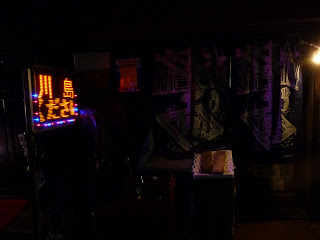
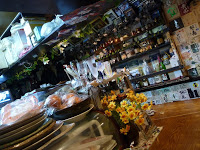
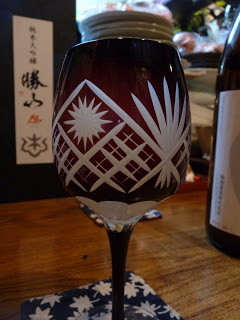
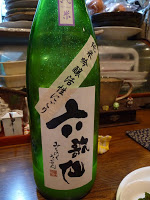
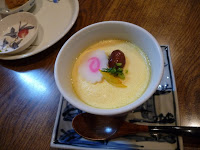
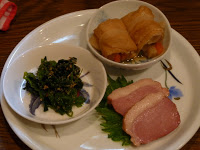
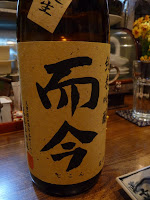
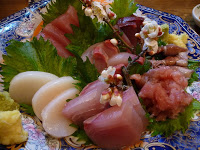
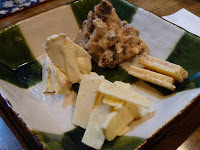
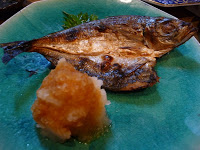
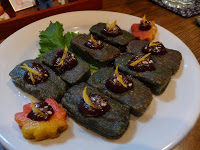
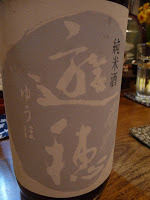
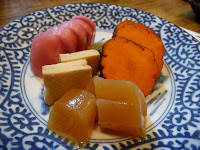
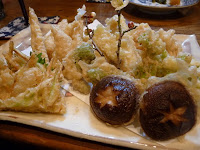
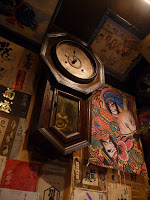
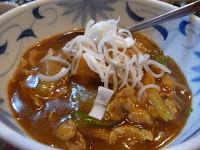
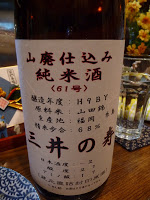
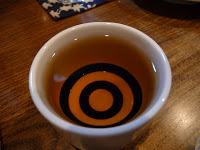
thank you, thank you, thank you! i have been following your blog for a while now, but am a little to coy to attempt the depths of monzennakacho by myself – so was thrilled to see you had reviewed something in my neighbourhood. i live a hop, skip and a jump from this place and i didnt even know about it. as a girl with a passion for izakayas and a thirst for nihon-shu i shall be pointing my mama-charri in kawashima's direction and peddling there pronto. かんぱい!
レベッカ
ベッキー, have you been to Honoka or Kikuya (穂のか、きくや日本料理)? They both look appealing and are just a trip, stumble and fall away from Kawashima. Woodsy really wanted to go to Sosaibou (蔬菜坊) for the shoujin courses and sake, but they were full.
I'm sure we'd be amenable to another meeting in the area (possibly a little less sake though?), so feel free to email.
hey jon!
thanks for your reply. i havent been to either of the establishments that you mentioned, but you have peaked my interest. actually, ebisu, nakameguro and jiyugoka are my usual stomping grounds – but i fear that i have gotten into a bit of a rut and am trying to explore new territories. i would definitely be up for a sashimi binge fueled by lashings of nihon-shu with like minded individuals… famous last words me thinks. (^o~)
Musashikoyama! My hometown. The cheese platter sounds interesting. And certainly the nihonshu.
I can't believe I said I don't like nama. Live and learn.